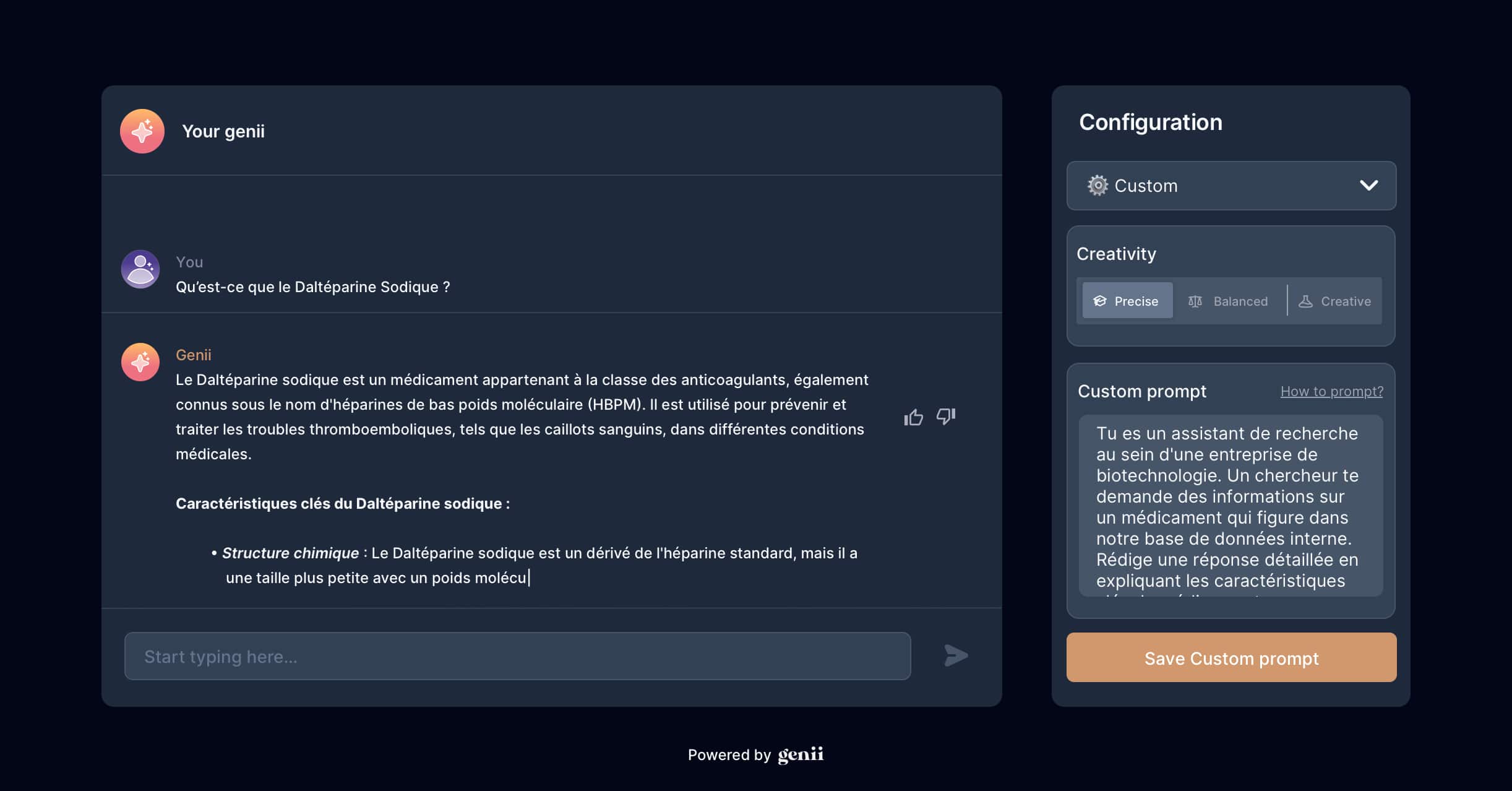In the world of artificial intelligence, ChatGPT and similar models are creating a real buzz. Capable of transforming a simple request into entirely new content, they open up new perspectives in a variety of fields. Yet, despite their potential, the responses they generate often fail to live up to expectations. Why is this? It all lies in the way we formulate our "prompts". The effectiveness of AI depends largely on the quality of the prompt submitted. At tolk.ai, we understand the importance of mastering this aspect for optimal results.
In this article, we'll introduce you to the ACE method we've personally developed to help you build the best prompts. We'll guide you through the key elements of a good prompt and provide you with practical techniques for maximizing the impact of your interactions with AI. Whether you're a novice or looking to improve your skills, these tips will help you get the most out of your exchanges with AI.
To learn more about the world of prompts, we recommend you read "What is prompt engineering?
What is the ACE method? 🎾
As a reminder: an "Ace" in tennis is a winning serve that the opponent can't touch, marking a point for the server.
The ACE Method, inspired by the rules of tennis, is an essential guide to developing effective prompts for artificial intelligence. Like a tennis player looking to win points with powerful serves, the ACE method focuses on three key steps to scoring points with AI.
A for "Approach ": Visualize your desired result as a player prepares to serve with precision.
C for "Instructions": Guide the AI with clear instructions as a player guides the ball to a precise area of the court.
E for "Requirements": Set non-negotiable criteria for the AI, just as a player must respect the rules of the game.
By following the ACE method, you optimize your chances of success with AI, just as a tennis player looks for the perfect ace to win the game. So get your racket ready and use the ACE method for winning prompts with AI!
"A" for Approach 🔮
The approach you take in your interactions with AI plays a fundamental role in the quality of the answers obtained. Clearly visualize the desired result and establish a roadmap to guide the AI.

View the desired response
Before launching your request, take the time to visualize the result you want to achieve. Think of your prompt as a roadmap to reach that goal. For example, if you're looking for article ideas on a given topic, think about the angles, sub-themes and key points you'd like to include in the response. The clearer your vision of the outcome, the more precise and tailored your prompt will be.
Indeed, AIs can be incredibly powerful, but they are not infallible. They depend on the information you provide, and are designed to conform to your intentions. By clearly visualizing your desired result, you increase the chances of getting precise answers in line with your expectations.
Contextualize your request
To obtain relevant, detailed answers, don't hesitate to provide the AI with context. Imagine you're asking a chef for help with a delicious recipe. You'd need to give it details about your culinary preferences, the ingredients you like or avoid, and the level of difficulty you're looking for. The more context you provide, the more personalized and relevant the answer will be.
To contextualize your request, clearly identify the topic or problem you're seeking information on. For example, if you're asking AI to help you generate job-specific interview questions, specify the required skills, essential qualifications and company values for which you want to obtain relevant questions.
"C" for Instructions 🫡
The instructions you give to the artificial intelligence are one of the essential elements for successful interactions. They act as a guide for the AI, showing it the path to follow to meet your expectations.

Direct the action of your prompts
AI responds better to clear, precise instructions. Rather than using generic terms, use specific words to tell the AI what kind of response you expect. By being precise in your requests, you guide the AI towards answers that correspond exactly to your expectations. This avoids ambiguous or irrelevant responses, saves you time and considerably improves the relevance of interactions. For example, if you decide to use the custom prompt on genii, instead of simply asking "Answer clearly", specify whether you want an answer:
- "informative
- "with a friendly tone"
- "an answer in bullet point form
Although the AI is powerful, it needs guidance to perform at its best. Don't hesitate to give additional instructions to fine-tune the answer to your expectations. For example, you can ask the AI to add concrete examples, adopt a specific tone or respect a word limit.
Give AI a role
When you give AI a specific role, you give it the opportunity to slip into the shoes of an expert in a particular field. By assigning it a defined role, you give it expertise tailored to your specific needs. This approach allows you to take full advantage of AI's unique capabilities in a variety of fields.
For example, by defining the role of "local tour guide" for the AI, you enable it to share detailed information on tourist attractions, local events, good restaurant addresses and much more. Thanks to this specific role, AI will be able to provide personalized recommendations that match travelers' specific preferences and interests.
It's important to note that giving AI a role doesn't mean limiting it to a single area of expertise. Depending on the platform or AI model used, you can assign different roles to AI for different tasks. This flexibility allows you to fully explore the capabilities of AI in different contexts, and benefit from a wide range of possibilities. As a result, by defining a precise role for AI in your prompts, you can make the most of its potential to deliver precise, personalized results in line with your expectations.
"E" for Requirements 🚨
Requirements play a fundamental role in the process of creating prompts for artificial intelligence. They define the non-negotiable criteria that the AI must meet in its responses. This step is crucial to obtaining relevant and responsible results. In this section, we will discuss the importance of defining clear requirements, and provide examples of requirements to best guide AI.

Defining non-negotiable rules
When it comes to interacting with AI, it's vital to clearly specify the requirements to which it must conform. These requirements may include strict ethical rules, legal obligations, language constraints or other essential aspects. By defining these criteria from the outset, users can ensure that the AI's responses correspond exactly to their specific needs, and comply with current ethical and legal standards.
Here are a few concrete examples:
- Compliance with ethical standards: Require that AI does not generate discriminatory, offensive or prejudicial content. This prevents unwanted bias and ensures that responses are always respectful and inclusive.
- Data confidentiality: Require AI not to store or disclose users' personal or sensitive information. This requirement is essential to protect privacy and guarantee data security.
- Consistency with corporate values: If AI is used in a business context, specify that it must respect corporate values and policies. This ensures consistency in the answers provided to customers or employees.
- Inclusive language: Ask AI to use language that is inclusive and respectful of all gender identities and sexual orientations.
Give an example of a perfect answer
In addition to ethical requirements and non-negotiable criteria, it's crucial to provide the AI with concrete examples of desired responses. By presenting a model response that you consider perfect, and providing it in quotation marks, you guide the AI to adopt the specific structure, tone and style you expect. These examples will serve as a reference for future exchanges with the AI, guaranteeing greater consistency and relevance in the responses generated. By guiding the AI with precise examples, you optimize the user experience and get results that exactly meet your needs.
To summarize
This article presents the ACE method, a three-step approach to writing effective prompts for artificial intelligence. The approach consists in visualizing the desired result, the instructions offer clear and specific instructions, and the requirements define the non-negotiable criteria. By giving AI a role and providing concrete examples of desired responses, you guide AI to relevant and accountable results. By adopting the ACE method, you fully exploit the potential of AI for a variety of tasks, maximizing the efficiency and quality of your interactions.




